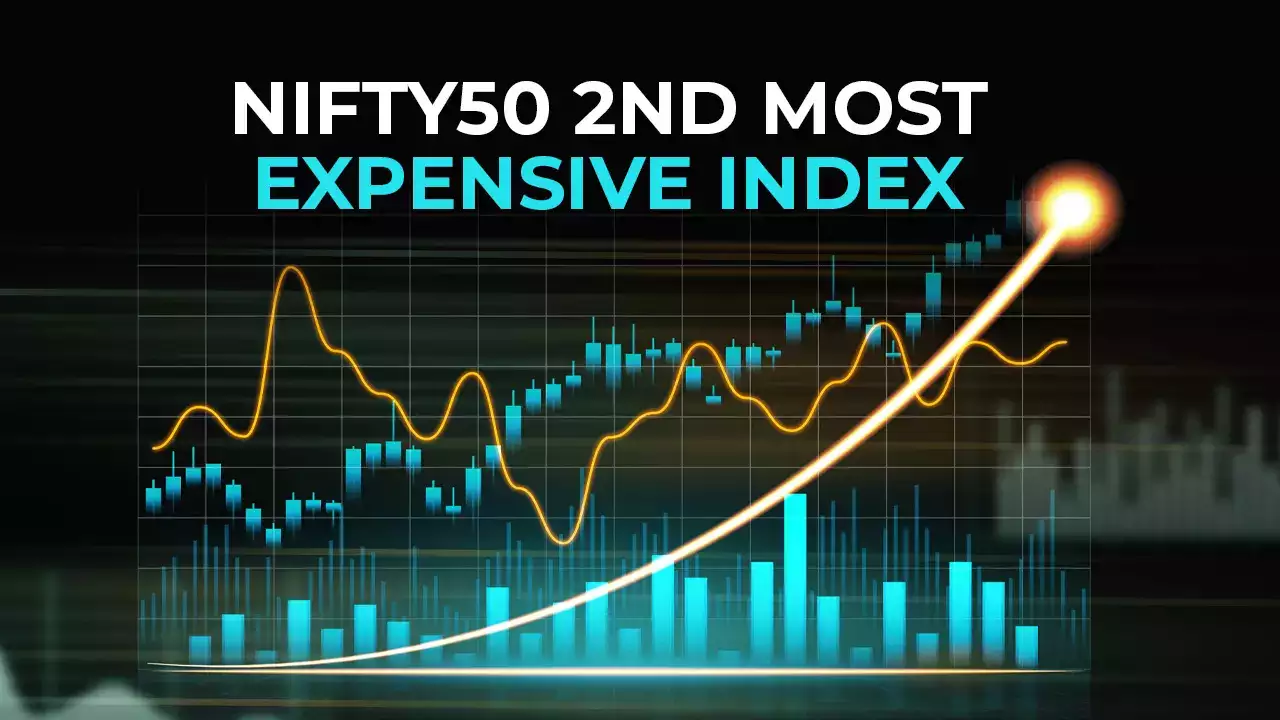The Colossal Misconception of the NIFTY 50 PE Ratio

The idea of using the Price-to-Earnings (P/E) ratio to gauge whether the market is overvalued or undervalued is deeply flawed. This overused metric fails under analytical scrutiny and is often misleading. Investors, analysts, and fund managers continue to rely on it, ignoring the fundamental complexities of market valuation.
Recently, there was an uproar when Zomato replaced JSW Steel in the NIFTY 50 index, causing a rise in the index’s P/E multiple. Some experts saw this as a bearish signal, claiming that the market was no longer a screaming buy. But was it ever? If you’ve listened to fund managers, brokers, or TV anchors over the past year, every market dip was labeled a “buying opportunity.”
However, comparing today’s NIFTY P/E with historical P/E ratios from 1910, 1945, or even 1982 is like comparing apples to flying saucers—it simply makes no sense.
Why the NIFTY 50 P/E Ratio is an Illusion
1. The Index P/E Ignores Skewness in Earnings
Let’s simplify this with an example:
- Assume an index consists of 5 companies. Each earns $10 million, and their combined market cap is $500 million. The P/E ratio? 10x ($500M ÷ $50M).
- Now, imagine one company earns the entire $50 million, while the other four earn zero. The market cap remains $500M, and the index P/E stays 10x.
- In another scenario, one company earns $100M, but the rest collectively lose $50M. Again, total earnings remain $50M, keeping the P/E at 10x.
Despite identical P/E ratios, the earnings distribution and market health are entirely different in each case. Yet, no analyst accounts for this skew when citing index P/E values.
2. Frequent Changes in Index Constituents
The NIFTY 50 is constantly evolving. Of the original 1995 NIFTY 50 stocks, only 12 remain today—a staggering 70% turnover!
Over the years, we’ve seen legacy companies like Bombay Dyeing, Arvind Mills, and Essar Gujarat make way for high-growth tech firms like Infosys and Zee Entertainment in the late 1990s. Fast forward to today, and companies like Zomato are replacing industrial giants like JSW Steel.
How can we compare today’s NIFTY 50 P/E to historical P/E values when the very DNA of the index has changed so dramatically?
This issue isn’t exclusive to India:
- S&P 500: 36% of companies have changed since 2000
- FTSE 100: 46% have changed
- NASDAQ 100: 59% have changed
- DAX (Germany): 20% have changed
- CAC (France): 30% have changed
Since these indices now consist of different sectors, industries, and business models, historical P/E comparisons are utterly meaningless.
3. Sectoral Shifts Make P/E Comparisons Impossible
Even if some companies remain in the index, their business models change drastically over time.
Take Reliance Industries:
- In the 1990s, it was primarily a refining and petrochemical giant.
- Today, it is a tech and retail conglomerate with a significant digital business.
Tata Motors followed a similar transformation:
- Once a pure-play commercial vehicle manufacturer, it is now a global passenger car company with brands like Jaguar Land Rover.
How can we compare their P/E multiples today vs. 30 years ago, when they are fundamentally different businesses?
4. Interest Rates and Inflation Shape Market Valuations
A market’s P/E ratio is significantly influenced by interest rates and inflation, which fluctuate dramatically over time.
Consider the US:
- Interest rates were 16% in 1982, dropped to 1% in the early 2000s, and now hover around 5%.
- Lower rates = higher P/E multiples (and vice versa).
India’s story is similar:
- In the 1990s, interest rates were in the mid-teens.
- Today, they are in single digits.
Since P/E is essentially the inverse of earnings yield, interest rate movements render historical P/E comparisons meaningless.
The Final Blow: Cross-Country P/E Comparisons are Nonsense
Foreign analysts often compare India’s P/E ratio with Brazil, China, or Taiwan to determine relative market “cheapness.” But this is pure nonsense.
Each market has a completely different industry composition:
- Brazil: Commodity-heavy
- India: Mixed (Tech, Financials, Consumption)
- China: Dominated by Tech & Financials
- Taiwan: Manufacturing-focused
Comparing their P/E ratios is like comparing cricket batting averages with golf handicaps—they are unrelated!
Conclusion: Stop Oversimplifying Market Valuations
The NIFTY 50 P/E ratio is a misleading and oversimplified metric that:
✅ Ignores earnings skew
✅ Fails to account for index composition changes
✅ Does not reflect sectoral dominance shifts
✅ Overlooks interest rate & inflation impacts
✅ Makes meaningless cross-country comparisons
Market valuation is a complex science, and reducing it to a single P/E ratio is an intellectual crime. While simplification is helpful, oversimplification leads to bad investment decisions.
So next time someone tells you that the NIFTY P/E ratio signals an undervalued or overvalued market, take it with a huge grain of salt.



